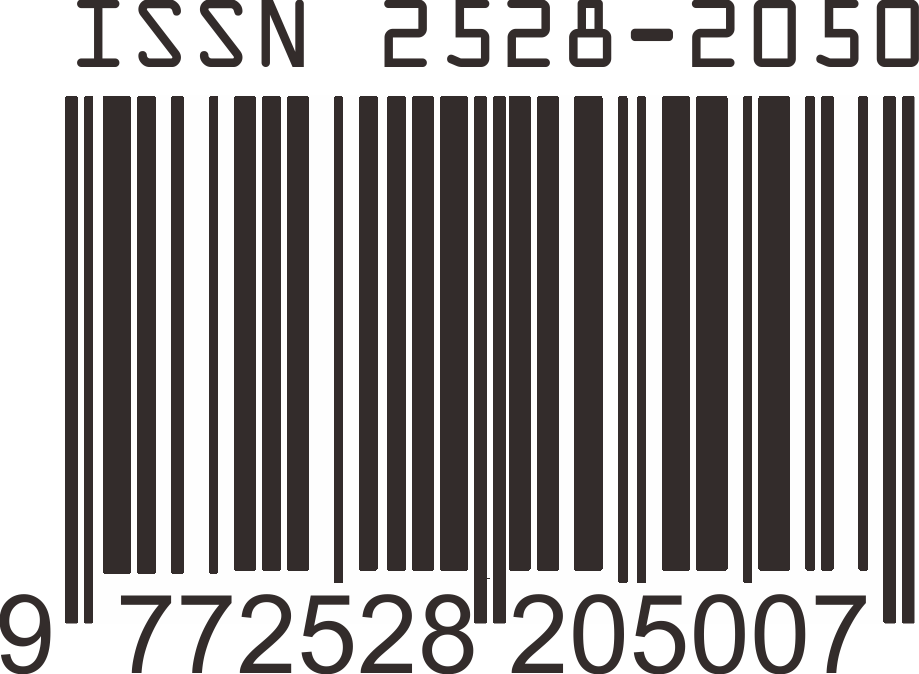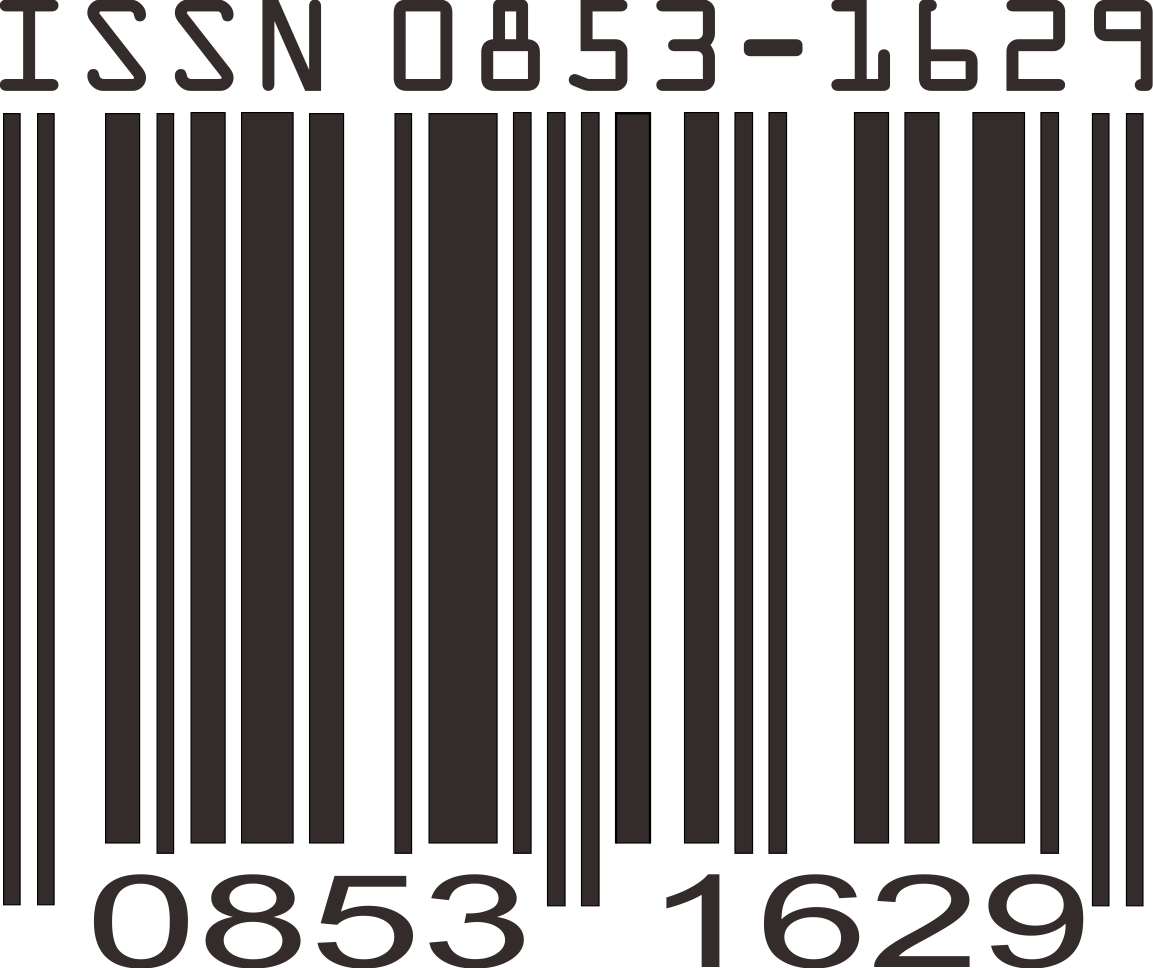Screening Tumbuhan Alternatif Penghasil Xanthorrhizol Menggunakan Pendekatan In-Silico Berdasarkan Marker MatK
Abstrak
Kata Kunci
Teks Lengkap:
PDFReferensi
Apavatjrut, P., Anuntalabhochai, S., Sirirugsa, P., and Alisi, C., 1999. Molecular Markers in the Identification of Some Early Flowering Curcuma L. (Zingiberaceae) species. Ann. Bot. 84, pp. 529-534.
Hargono D. 1996. Sekelumit Mengenai Obat Nabati dan Sistem Imunitas. Cermin Dunia Kedokteran 108: 6-10.
Islam, M.R., Ahamed, R., Akbar, M.A., Alam, K. and Food, U.S., 2010. In Vitro Antimicrobial Activities of Four Medicinally Important Plants in Bangladesh. (January).
Jang, M. K., Sohn, D. H., Ryu, J. H., 2001, A Curcuminoid and Sesquiterpenes as Inhibitor of Macrophage TNF-a Release from Curcuma zedoaria, Planta Med, 67: 550-552
Lobo, R., Prabhu, K.S., Corporation, H.M., Shirwaikar, A. and Shirwaikar, A., 2009. Curcuma zedoaria Rosc, ( white turmeric ): A review of its chemical, pharmacological and ethnomedicinal properties. (February).
Maciel N. and Criley R.A. 2003. Morphology growth and flowering behavior of Curcuma zedoaria. Acta Hort. (ISHS) 624: 111-116.
Makabe H et al. 2006. Antiinflammatory sesquiterpenes from Curcuma zedoaria. Nat Prod Res. 2006; 20: 680–686.
Matsuda H., Ninomiya K., Morikawa T. and Yoshikawa M. 1998. Inhibitory effect and action mechanism of sesquiterp-enes from Zedoaria rhizome on D-galactosamine/lipopoly-saccharide- induced liver injury. Bioorg. Med. Chem. Lett. 8: 339-344.
Nadkarni KM. 1999. Indian Materia Medica, 3rd edn. Mumbai, India: Popular Prakashan Private Limited
Oon, S. F., Nallappan, M., Tee, T. T., Shohaimi, S., Kassim, N. K., Sa’ariwijaya, M. S. F., & Cheah, Y. H. 2015. Xanthorrhizol: A review of its pharmacological activities and anticancer properties. Cancer Cell International, 15(1). https://doi.org/10.1186/s12935-015-0255-4
Purseglove J.W., Brown E.G., Green C.L. and Robbins S.R.J. 1981. Spices. Vol. 2. Chapter 9, Tropical Agriculture Series, Longman, London and New York
Rukayadi, Y., Lee, K., Han, S., Yong, D. and Hwang, J. K. 2009. In vitro activities of panduratin A against clinical Staphylococcus strains. Antimicrobial Agents and Chemotherapy 53(10): 4529-4532.
Sasaki Y., Fushimi H., Cao H., Cai S.Q. and Komatsu K. 2002. Sequence analysis of Chinese and Japanese Curcuma drugs on the 18S rRNA gene and trnK gene and the application of amplification-refractory mutation system analysis for their authentication. Biol. Pharm. Bull. 25: 1593-1599.
Sembiring BB, Ma’mun, & Ginting EI. 2006. Pengaruh kehalusan bahan dan ekstraksi terhadap mutu ekstrak temulawak (Curcuma xanthorrhizo Roxb.) Buletin Balitro. 17(2):53- 58
Sirirugsa P. 1999. Thai Zingiberaceae: Species diversity and their uses. International Conference on Biodiversity and Bi-oresources: Conservation and Utilization. Phuket, Thailand.
Syu, W. J., Shen, C. C., Don, M. J., Ou, J. C., Lee, G. H., Sun, C. M., 1998, Cytotoxicity of Curcuminoids and Some Novel Compounds from Curcuma zedoaria. Journal of Natural Product, 61(12): 1532-1534
The Plant List, 2013. Version 1.1. Published on the Internet; http://www.theplantlist.org/ [Accessed 1 January].
www.ncbi.nlm.nih.gov/GenBank
Yoshioka T., Fujii E., Endo M., Wada K., Tokunaga Y., Shiba N., Hohsho H. and Muraki T. 1998. Antiinflammatory potency of dehydrocurdione a zedoary-derived sesquiterpene. Inflamm. Res. 47: 467-481.
Yusuf M. 2000. Genetic diversity of the family Zingiberaceae Bangladesh. Ph.D. Thesis. Department of Botany, Jahangirnagar University, Dhaka, Bangladesh.
Záveská, E., Fér, T., Šída, O., Krak, K., Marhold, K., & Leong-škorničková, J. 2016. Phylogeny of Curcuma (Zingiberaceae) based on plastid and nuclear sequences: Proposal of the new subgenus Ecomata Author (s): Eliška Záveská , Tomáš Fér , Otakar Šída , Karol Krak , Karol Marhold and Jana Published by : International Association for , 61(4), 747–763.
Article Reads
Total: 1589 Abstrak: 597 PDF: 887Article Metrics
Metrics powered by PLOS ALM
Refbacks
- Saat ini tidak ada refbacks.
Laman ini dikelola oleh:
Bio Publisher
The Faculty of Biology Publishing
Laman ini dikelola oleh:
Penerbitan Fakultas Biologi
Universitas Jenderal Soedirman
Jalan dr. Suparno 63 Grendeng
Purwokerto 53122
Telepon: +62-281-625865
Email: biologi@unsoed.ac.id
Laman ini menggunakan:
OJS | Open Journal System
Software pengelolaan jurnal ilmiah online. Versi yang digunakan adalah 2.4.8.0.
Metadata artikel terdaftar di:
Crossref
Agen resmi internasional pendaftaran Digital Object Identifier (DOI)
Artikel jurnal ini terindeks:









